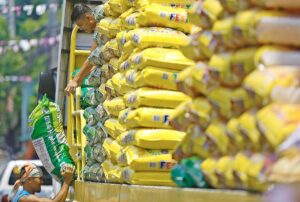
The Philippines is poised to continue its status as the premier rice importer globally in 2024, according to a report from the United States Department of Agriculture (USDA). This projection comes in the wake of local rice prices in the Philippines hitting a 14-year peak over the past month, highlighting a significant trend in the country’s agricultural importation patterns.
The USDA’s Economic Research Service has presented figures that paint a clear picture of the Philippines’ standing in the global rice market. The country is estimated to import a record-breaking 3.8 million metric tons (MT) of rice this year, marking an increase from the 3.22 million MT recorded from January 1 to December 22, 2023. These statistics firmly position the Philippines at the pinnacle of global rice importation, surpassing other major importing nations such as China, Indonesia, the European Union, Nigeria, and Iraq.
A noteworthy aspect of the Philippines’ rice importation strategy is its reliance on Vietnam as a primary rice supplier, with imports amounting to 56,090.63 MT as of January 11 this year. This relationship underscores the strategic partnerships and trade dynamics within the Southeast Asian region.
Despite the Philippines’ burgeoning population of 112 million, its rice importation volume significantly eclipses that of China, with its massive population of 1.409 billion, projected to import 2.8 million MT of rice this year. This stark contrast sheds light on the varying levels of domestic rice production and consumption patterns between the two nations.
The global rice trade itself is undergoing fluctuations, with the USDA estimating a trade volume of 5.22 million MT this year, a slight decrease from the previous year’s 52.4 million MT. This dip is attributed primarily to the export bans implemented by India between 2022 and 2023, affecting the overall dynamics of the global rice market.
The USDA report emerges amidst a backdrop of rising rice prices in the Philippines, with rice inflation reaching a 14-year high of 19.6% in December 2023. This escalation in rice costs underlines the pressing challenges and potential vulnerabilities within the country’s food security framework.
In response to these challenges, Agriculture Secretary Francisco Tiu Laurel Jr. has underscored the necessity of substantial investments in the rice sector. He advocates for an investment of at least P1.2 trillion over the next three years, predominantly for irrigation projects covering 1.2 million hectares of farmland. Secretary Laurel’s emphasis on large-scale, impactful projects reflects a strategic approach to bolstering the country’s agricultural infrastructure and reducing dependence on rice imports.
As the Philippines grapples with these pressing agricultural issues, the global community watches closely, recognizing the broader implications of the nation’s rice importation strategy on regional trade, food security, and economic stability.





















Comments are closed for this article!